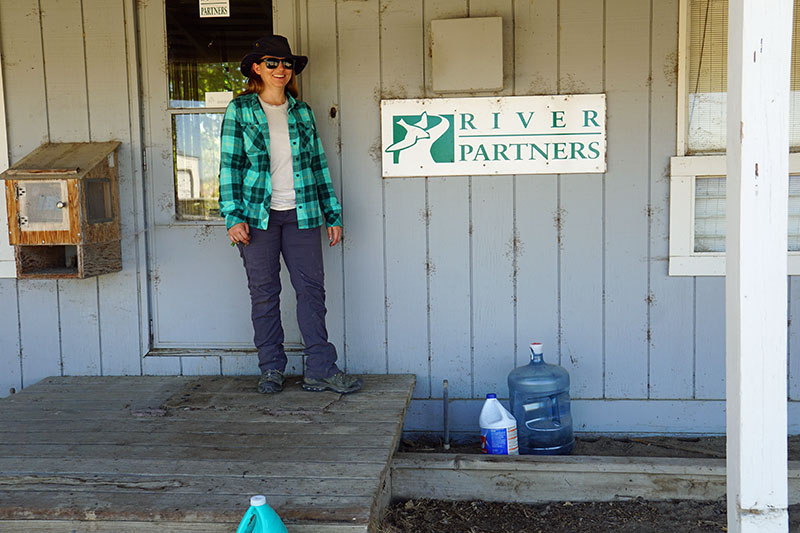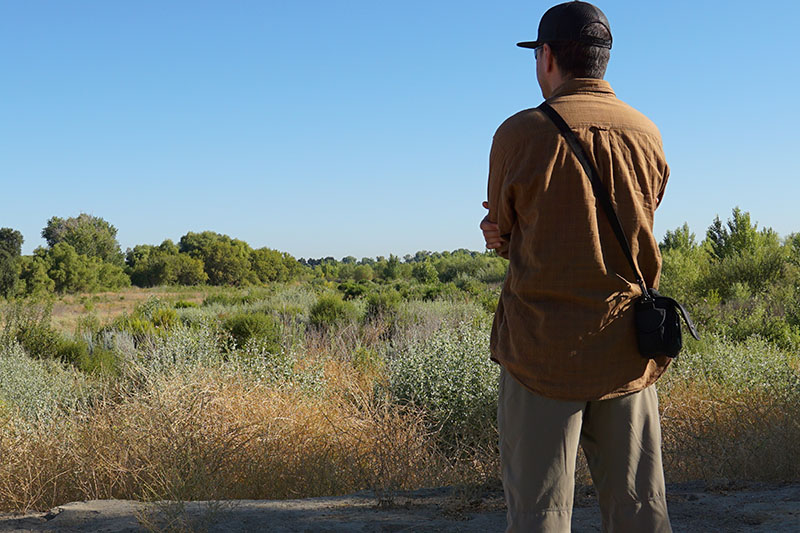Elated nature lovers celebrated the end of August with news that California Assemblymember Adam Gray had acquired $40 million to further enhance development of wetlands and riparian forests at the confluence of the Tuolumne, San Joaquin and Stanislaus Rivers. Led by River Partners, the project will restore natural habitat and add tremendous value to the nearby San Joaquin River National Wildlife Refuge.
With over 90% of Valley wetlands lost to urban and agricultural development, restoration of any of them represents a giant leap forward toward a more sustainable water future in a region threatened by climate change, depleted aquifers, and ongoing loss of wildlife. In addition to the aesthetic, recreational and wildlife values at Dos Rios Preserve, a location slated to become the first new state park in thirteen years, wetland restoration will play a significant role in flood control, carbon sequestration, and groundwater recharge.
There may be no better organization than River Partners to bring the three rivers back to their natural state. With a staff including Restoration Ecologists, Biologists, and Field Technicians, River Partners applies science, natural history, and technical expertise to every aspect of river restoration.
“What I like about River Partners is that they don’t look at the plight of fish and our environment then wring their hands. They get their hands dirty, doing the work to make things better,” said Gray. “And they invite everyone to the table – from farmers to farmworkers to scientists to tribal leaders and everyone else who wants to join in.”

Long the neglected step-child of federal and state funding, the San Joaquin Valley features a drastically damaged environment, including one of the largest areas of land subsidence in the world, an ongoing problem as farmers continue to pump groundwater. With the almost certain future events of torrential rains and flooding, wetland restoration offers one of the most cost-effective ways of controlling floodwaters and restoring aquifers.
A future of river restoration will be a vital necessity as Valley leaders secure funding that will help us adjust to new climate realities.
“The science couldn’t be clearer,” said River Partners President Julie Rentner. “The San Joaquin Valley is ground zero for both more intense and frequent climate-driven floods and droughts on the horizon. Expanding and restoring the Valley’s floodplains provides significant benefits on both fronts.”
Computer modeling by scientists at the University of California has shown that atmospheric rivers will become more intense and occur more often in the near future, increasing the odds of a mega flood event like the one that submerged vast areas of the Central Valley in 1862. Among the recommendations by climate scientists, ecologists, and hydrologists for flood control, restoration of natural floodplains ranks number one.

Scientists have also warned that unless we greatly increase state and federal funding, the Valley will face increasingly perilous conditions as floods endanger towns, cities and suburbs. Flood events like the one that has deprived residents of Jackson, Mississippi, of drinking water could become a common occurrence.
Currently a candidate for office in US Congressional District 13, Assemblymember Adam Gray has shown again and again he can deliver for his Valley constituents, while Republicans in Congress have shown again and again that they’re in the pockets of climate change deniers.
Twenty years ago, Republican Senator John McCain was among the leaders of a bipartisan effort to address the consequences of climate change. Republicans like Olympia Snowe, Lincoln Chaffee, and Susan Collins signed on to efforts to mitigate the harmful effects of heat-trapping pollutants on the earth’s atmosphere. Today, it’s easier to find a barnyard chicken with canine teeth than to get any Republican Congressmember to accept the need for fast action on climate change.
Delivering for Valley rivers isn’t just a boon for a nature and wildlife, it’s become a necessity if Valley citizens hope to avoid disastrous floods and threats to water quality throughout the region. Adam Gray delivers.

As decades long supporters of Tuolumne River Trust, we’re delighted to see that government funds are being appropriated to continue funding this critical joint-effort project. The needs are great, the money and volunteer manpower are applied judiciously, but progress, albeit steady, has been slower than we’d anticipated.
Hope this gives things a boost….we’re running out of time to make things right!
Eric:
Very informative piece, thank you.
Some MJC friends and I are documenting our LOCAL CLIMATE CHANGE IMPACTS. As part of this, Philosophy prof. Bill Anelli and I visited the three bridges that go across brnches of the Delta Mendota Canal just south of Dos Palos.
The rapidly subsiding lands there have sunk so far that the Canal rises, and it could come up over the bridges.
Interested readers can view our 4 minute video report about how drought-> increased San Joaquin groundwater pumping-> land subsidence has happened there. A major respponse of the water managers there is to decrease water delivered into the canal branches, to prevent the bridges from acting as dams:
Subsidence of the Delta Mendota Canal 3:43: https://vimeo.com/649346322/
As always, Richard, thank you for the great work and public service.
I would like to see the Mapes ranch added to the refuge. Given the number of birds that visit each winter, the potential benefit to wildlife would be tremendous.
I am grateful that the stewards of the Mapes ranch welcome and accommodate the birds. My desire is not meant as a criticism in any way. I would expect the owner to be well compensated for his land.
Bruce: Parts of the Mapes Ranch are under conservation easements and are a tremendous boon for local wildlife.
Xavier Sandoval is that you ???